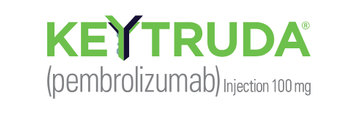
Immune Checkpoint Inhibitors Linked to Widening Cancer Survival Gaps by Insurance Status
National registry study finds overall survival improved across the board after the introduction of immune checkpoint inhibitor (ICI) drugs, but gaps remained. Uninsured patients realized smaller gains compared with those with private insurance.
Survival gains from immune checkpoint inhibitors (ICIs) have been unevenly distributed in the U.S., with uninsured patients seeing smaller improvements than those with private insurance, according to new research published July 7 in JAMA Network Open.
The first ICI, Yervoy (ipilimumab), received FDA approval in 2011 for melanoma. Since then, additional ICIs, such as Opdivo (nivolumab) and Keytruda (pembrolizumab), have been approved for multiple cancer types, including non–small cell lung cancer (NSCLC). Clinical trials have shown meaningful improvements in overall survival compared with traditional chemotherapy or radiation. However, the high costs of ICIs, often up to $250,000 for a full course, raise concerns about access for uninsured patients.
The analysis, led by Jingxuan Zhao, Ph.D., M.P.H., of the American Cancer Society and Emory University, examined nationwide cancer registry data on more than 183,000 adults ages 18 to 64 with a new diagnosis of certain advanced cancers. To assess outcomes, researchers compared two-year overall survival before and after FDA approvals of ICIs.
More specifically, the study included adults aged 18 to 64 with a new diagnosis of stage IV melanoma, NSCLC or renal cell carcinoma (RCC) — cancers for which ICIs were approved by the FDA before 2016. Patients 65 or older were excluded because of near-universal Medicare eligibility, and cases diagnosed in 2020–2021 were omitted due to pandemic-related disruptions in care. The analysis compared survival among those with private insurance, Medicaid or no insurance at diagnosis, while excluding individuals with Medicare, missing demographic data or incomplete follow-up information.
Across all insurance groups, the study found that overall survival improved after ICIs became available. In non–small cell lung cancer (NSCLC), the most common cancer studied, two-year survival gains were smaller for uninsured patients, leading to a widening disparity of 1.3 percentage points compared with those with private insurance. For melanoma, survival rose from 28.7% to 46.0% among privately insured patients and from 16.2% to 28.3% among uninsured patients, creating a gap of more than six percentage points. Survival improvements among patients with Medicaid were comparable to those with private insurance across all three cancer types.
Sensitivity analyses showed consistent results, and Medicaid expansion status did not substantially alter outcomes. However, when comparing uninsured patients directly with those covered by Medicaid, the study found that disparities in NSCLC survival widened further, with uninsured patients experiencing worse outcomes by nearly two percentage points.
The study had several limitations, including the analysis of only three cancer types and that insurance status was assessed only at the time of diagnosis (it could have changed later). The analysis also relied on all-cause rather than cancer-specific mortality and lacked data on treatment details or newer therapies.
“Our findings have significant implications in the context of longstanding disparities in cancer outcomes in the US, where individuals with lower socioeconomic status or without health insurance have experienced worse survival rates,” wrote Zhao and her co-authors in the discussion section of their paper.
The authors emphasized that while survival gains were observed for all insurance groups, the uneven improvements point to growing inequities in the era of expensive novel therapies. “This gap is likely due to barriers to accessing ICI treatment,” they wrote.
Zhao and her colleagues also discussed broader policy implications. “Programs that reduce barriers to care, such as expanding access to health insurance coverage, providing comprehensive financial assistance to people without health insurance coverage, and making new treatments more affordable, may help to mitigate these disparities,” Zhao and her colleagues concluded.
Newsletter
Get the latest industry news, event updates, and more from Managed healthcare Executive.





















































